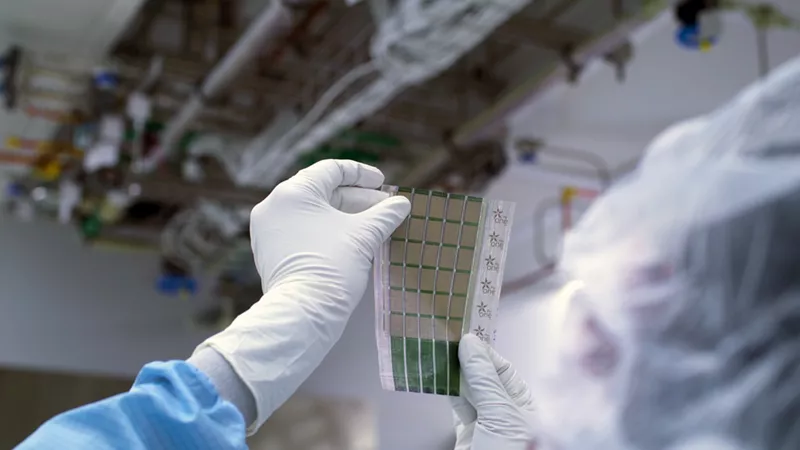Engineers at MIT in the US have developed ultralight fabric solar cells that turn any surface into a power source.
The durable, flexible solar cells are glued to a strong, lightweight fabric, making them easy to install on a fixed surface. They are said to be one-hundredth the weight of conventional solar panels, reportedly generate 18 times more power-per-kilogram, and are made from semiconducting inks using scalable printing processes.
“The metrics used to evaluate a new solar cell technology are typically limited to their power conversion efficiency and their cost in dollars-per-watt. Just as important is integrability – the ease with which the new technology can be adapted. The lightweight solar fabrics enable integrability, providing impetus for the current work. We strive to accelerate solar adoption, given the present urgent need to deploy new carbon-free sources of energy,” said Vladimir Bulović, the Fariborz Maseeh Chair in Emerging Technology, leader of the Organic and Nanostructured Electronics Laboratory (ONE Lab), director of MIT.nano, and senior author of a new paper describing the work in Small Methods.
To produce the solar cells, the team used nanomaterials in the form of a printable electronic inks. Working in the MIT.nano clean room, they coated the solar cell structure using a slot-die coater, which deposits layers of the electronic materials onto a prepared, releasable substrate that is three microns thick. Using screen printing, an electrode is deposited on the structure to complete the solar module.
The researchers can then peel the printed module, which is about 15 microns in thickness, off the plastic substrate, forming an ultralight solar device.
The solar modules are challenging to handle and can easily tear so to solve this challenge the MIT team searched for a lightweight, flexible, and high-strength substrate they could adhere the solar cells to and identified fabrics as the optimal solution due to their mechanical resilience and flexibility with little added weight.
They settled on Dyneema , a composite fabric that weighs 13g/m2. By adding a layer of UV-curable glue they adhered the solar modules to sheets of this fabric to form an ultra-light and mechanically robust solar structure.
MORE FROM ENERGY & ENVIRONMENT
“While it might appear simpler to just print the solar cells directly on the fabric, this would limit the selection of possible fabrics or other receiving surfaces to the ones that are chemically and thermally compatible with all the processing steps needed to make the devices. Our approach decouples the solar cell manufacturing from its final integration,” said co-lead author Mayuran Saravanapavanantham, an electrical engineering and computer science graduate student at MIT.
When they tested the device, the MIT researchers found it could generate 730W/kg when freestanding and about 370W/kg if deployed on the Dyneema fabric, which the team said is about 18 times more power-per-kilogram than conventional solar cells.
They also tested the durability of their devices and found that after rolling and unrolling a fabric solar panel more than 500 times, the cells retained over 90 per cent of their initial power generation capabilities.
While their solar cells are far lighter and much more flexible than traditional cells, they would need to be encased in another material to protect them from the environment. The carbon-based organic material used to make the cells could be modified by interacting with moisture and oxygen in the air, which could deteriorate their performance.
“Encasing these solar cells in heavy glass, as is standard with the traditional silicon solar cells, would minimise the value of the present advancement, so the team is currently developing ultrathin packaging solutions that would only fractionally increase the weight of the present ultralight devices,” said co-lead author Jeremiah Mwaura, a research scientist in the MIT Research Laboratory of Electronics.

